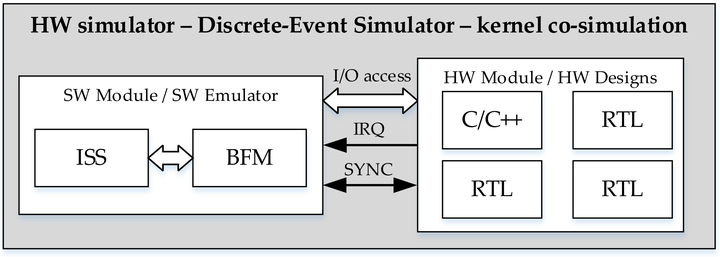
Abstract
Presently, the trend is to increase the number of cores per chip. This growth is appreciated in Multi-Processor System-On-Chips (MPSoC), composed of more cores in heterogeneous and homogeneous architectures in recent years. Thus, the difficulty of verification of this type of system has been great. The hardware/software co-simulation Virtual Platforms (VP) are presented as a perfect solution to address this complexity, allowing verification by simulation/emulation of software and hardware in the same environment. Some works parallelized the software emulator to reduce the verification times. An example of this parallelization is the QEMU (Quick EMUlator) tool. However, there is no solution to synchronize QEMU with the hardware simulator in this new parallel mode. This work analyzes the current software emulators and presents a new method to allow an external synchronization of QEMU in its parallelized mode. Timing details of the cores are taken into account. In addition, performance analysis of the software emulator with the new synchronization mechanism is presented, using: (1) a boot Linux for MPSoC Zynq-7000 (dual-core ARM Cortex-A9) (Xilinx, San Jose, CA, USA); (2) an FPGA-Linux co-simulation of a power grid monitoring system that is subsequently implemented in an industrial application. The results show that the novel synchronization mechanism does not add any appreciable computational load and enables parallelized-QEMU in hardware/software co-simulation virtual platforms.